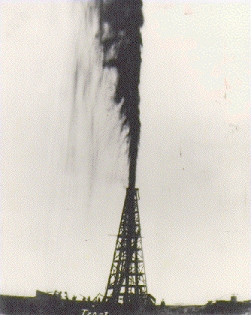
Geoscientist 17,1 January 2007
A new method proposed by two New Zealand scientists promises to help engineers extract oil far more efficiently. Amarendra Swarup reports.
There is a myth – immortalised by countless Hollywood movies – that oil sits in large pools in underground caverns, deep beneath the surface of the Earth. In this retelling, prospective oil barons and last-chance heroes make fortunes (and save the family farm) as oil comes gushing out of the ground.
The truth is rather less dramatic. There are no pools of oil and gushing oil is these days a thankfully rare aberration. As every Geoscientist reader should know, oil and other hydrocarbons such as natural gas are found within large formations of porous sedimentary rock. Typically, these lie some 1-10 kilometres underground, and can contain fractions of porous space as high as 30%. The pores are small, ranging from the width of a human hair to nearly a thousand times smaller, and are filled with varying proportions of water, oil and gas.
Questions such as how far down the oil is, how much there is and how fast the well can produce are all vital, because the viability of extraction depends upon the answers. And for the last decade, geologists have routinely probed subterranean liquids and their atomic nuclei using nuclear magnetic resonance techniques, (NMR) now familiar from medical imaging, to learn about the pore structure of these oil-soaked rocks (Box).
However, knowing the range of pore sizes does not tell them whether the pores are isolated or connected well enough to allow the oil to move through the rock and into the well. For that, geologists need to know if molecules can move from pore to pore, and if so, how rapidly – something easier said than done. Now, a new solution may be in sight.
Paul Callaghan and Kate Washburn (Victoria University of Wellington, New Zealand) have for the first time used NMR to track the movement and the speed of molecules moving between pores. By measuring changes in the relaxation time it takes the wobbling spins to lose synchronisation with the magnetic field, the researchers were able to track molecular motions between distinct regions in the rock.
“We can measure directly the rate at which molecules migrate from pore to pore, without the need for any modelling assumptions” says Callaghan. “In a new twist on an existing method, we have shown that two-dimensional maps of the relaxation rates ‘light up’ those particular molecules that have migrated between pores of different size.”
Current methods measure relaxation times by using a special NMR pulse sequence known as a Carr-Purcell-Meiboom-Gill train (CPMG), named for its inventors. The New Zealand duo used the CPMG train twice on the same chunk of sandstone, allowing a variable delay time between the two trains, so producing a two-dimensional data set, with each dimension relating to a separate train.
This can then be translated, using a complex mathematical technique called the Two Dimensional Laplace Inversion – into dramatic maps where molecules residing in their starting pore lie along a diagonal, while those migrating are seen as peaks off the diagonal. The rate of molecular exchange can also be determined by measuring the intensity of peaks as a function of the variable pulse-sequence delay time.
“The method is easy to use and could be applied in existing well-logging tools” says Callaghan. “However, it is equally applicable to other porous systems, such as those found in biology, materials research and chemical engineering.”
Vitally, the new technique provides a powerful new tool to examine both the rock structure. While companies such as Schlumberger are already very interested, Callaghan and Washburn say they have no intention currently of attempting to commercialise the idea. Their immediate goal is to advance the method and add complexity – thus, they hope, yielding even more information for explorers.